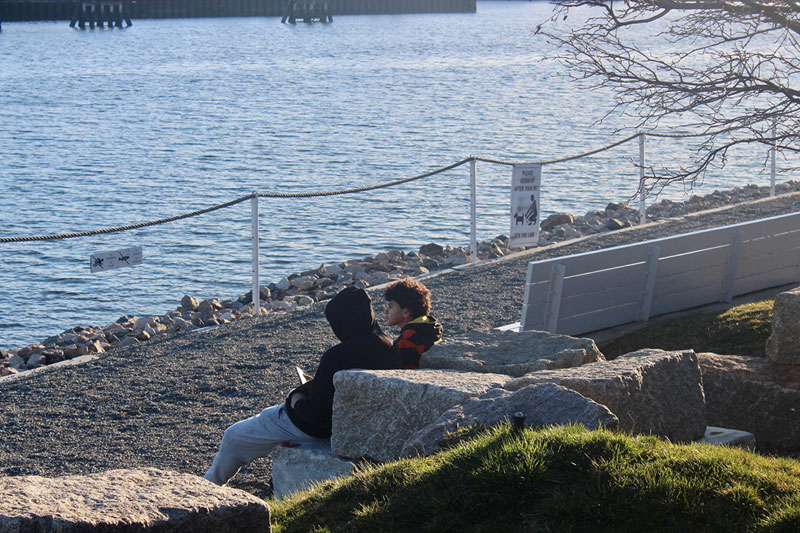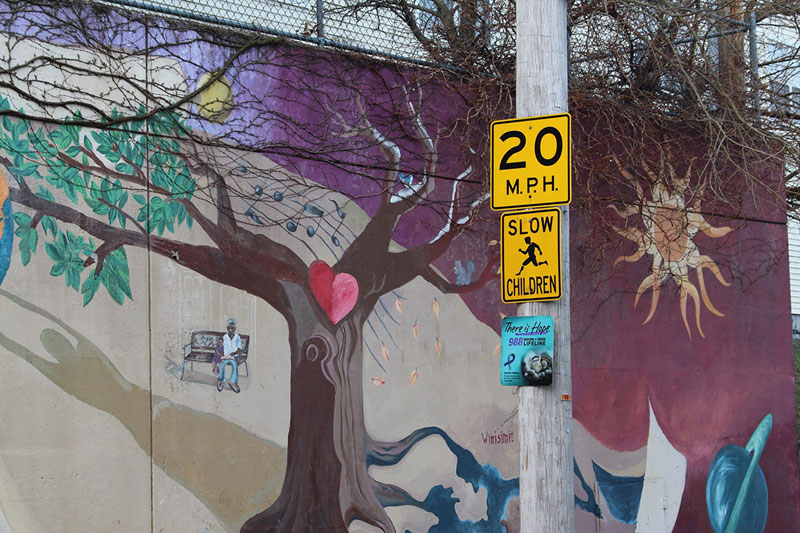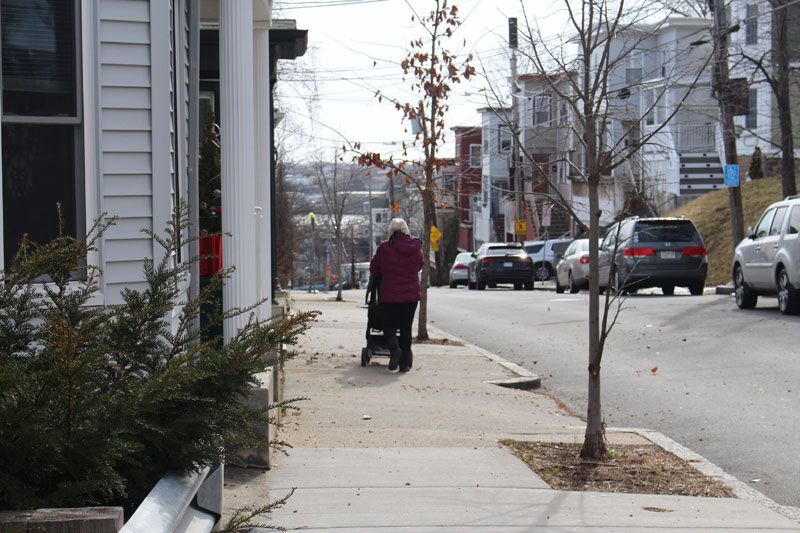Chelsea fights to protect its own
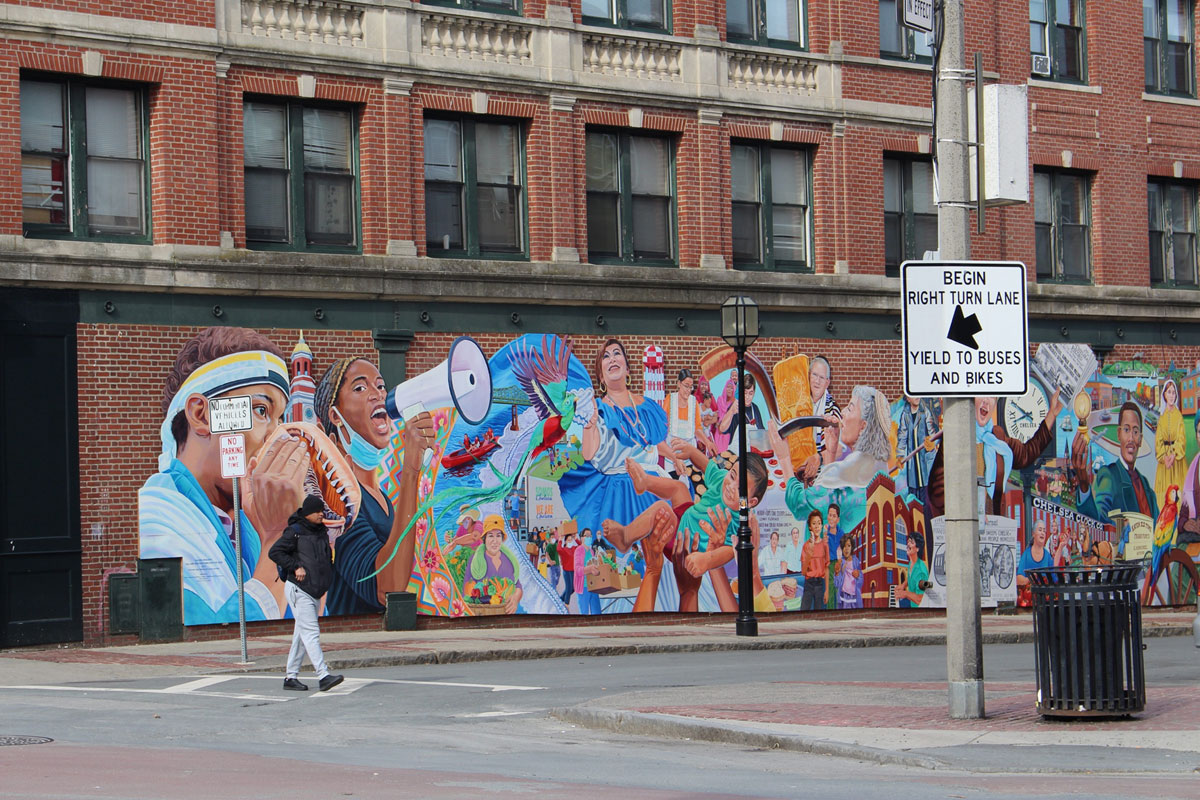
Standing along Broadway in downtown Chelsea, the sun descends behind the Tobin Bridge towering above only a few blocks away. The serenity of a spring afternoon is disturbed by the rumble of aircraft engines taking off and landing and the constant hum of traffic over the bridge.
Sandwiched between the jet fumes of Logan International Airport and the harmful particulate matter from exhaust pipes on Tobin Bridge, this small city has suffered the impacts of disproportionate environmental and public health burdens. Yet just blocks from the bridge, GreenRoots is working to organize community and municipal action against environmental injustices in Chelsea.
By leveraging community involvement, legal assistance, and government outreach, GreenRoots is finding success pushing back against environmental impacts made worse by private development, neglected hazards, and negligent laws. A decade ago, GreenRoots organizers protested a diesel power plant slated to be built next to an elementary school complex. They won that fight, and their work continues from the waterfront to parks to community gardens.
Chelsea residents have disproportionately shouldered the brunt of environmental burdens of Greater Boston for decades. Those residents are largely minorities and immigrants — as of last year, the city’s population is 67% Latino and almost half of its residents are first-generation immigrants. One in five residents lives below the poverty line.
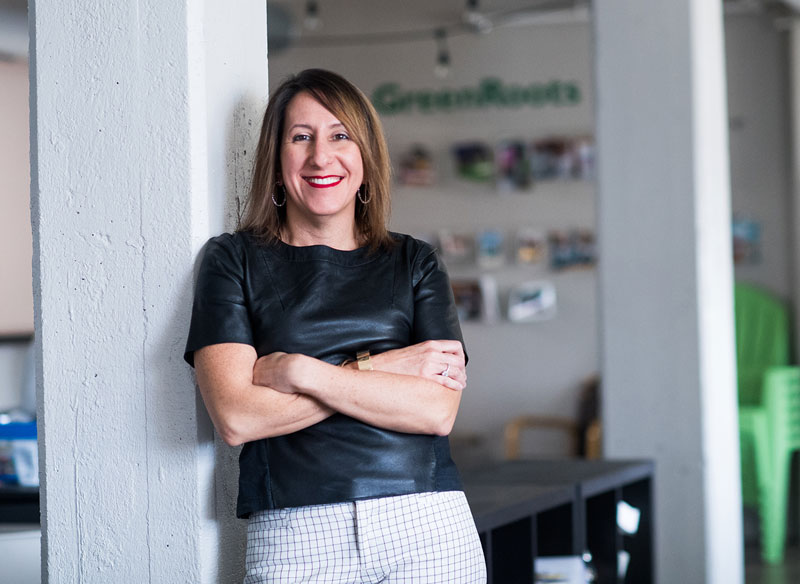
The problems start at the waterfront. “Chelsea Creek was more of a liability and a hazard than a resource,” said Roseann Bongiovanni, GreenRoots Executive Director and a lifelong Chelsea resident. “Why is that? Because Chelsea was always home to new arriving immigrants no matter where they’re coming from. So this is really environmental classism and racism.”
The city has long housed immigrant communities. Irish immigrants found employment in Chelsea’s shipbuilding industry after the Civil War. Then, in the early 1900s, Chelsea underwent an industrial boom thanks to waterfront and railroad access. Thousands of Jews migrated to Chelsea to meet the demand for labor until the 1950s when many moved to neighboring towns. Employers began recruiting Puerto Rican agricultural workers who had migrated after World War II. Over the next decade, the Latino population surged with the arrival of thousands of refugees from Central America. Chelsea still has the highest percentage of foreign-born residents in the state.
“The community is much more fragmented by ethnicity, national background, religion, and language,” explains Daniel Faber, a Northeastern professor of Sociology. “It makes it much more difficult for them to come together and speak with a unified voice.... They have the worst environmental injustice, they are the most picked upon.”
Many of the resources that power Massachusetts are stored along Chelsea Creek and the Mystic River, where they’ve been contaminating the land for decades. In massive tanks and open lots along the banks of Chelsea Creek are storage depots for all of Logan Airport’s jet fuel, 80% of the New England region’s heating fuel, and mountains of road salt for towns all over the region.
The result: little green space and heavy motor vehicle and aircraft traffic. A 2005 environmental justice report found that Chelsea ranks third in the state among overburdened communities' exposure to ecological hazards.
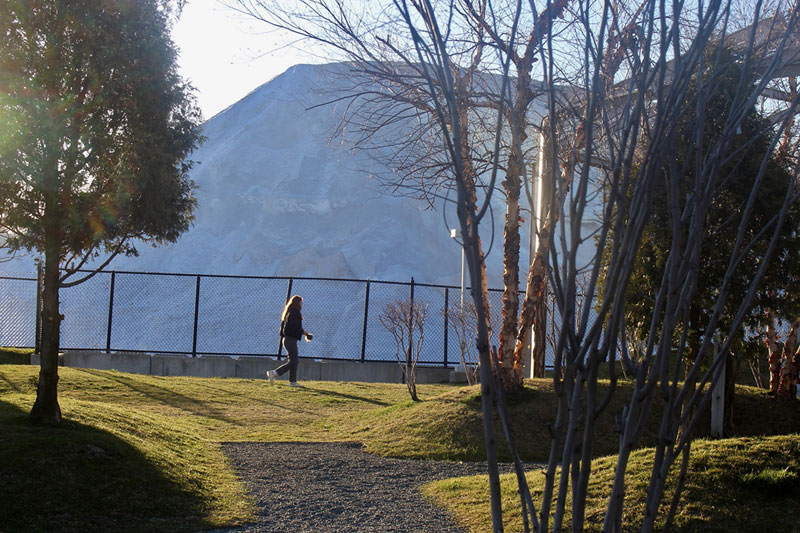
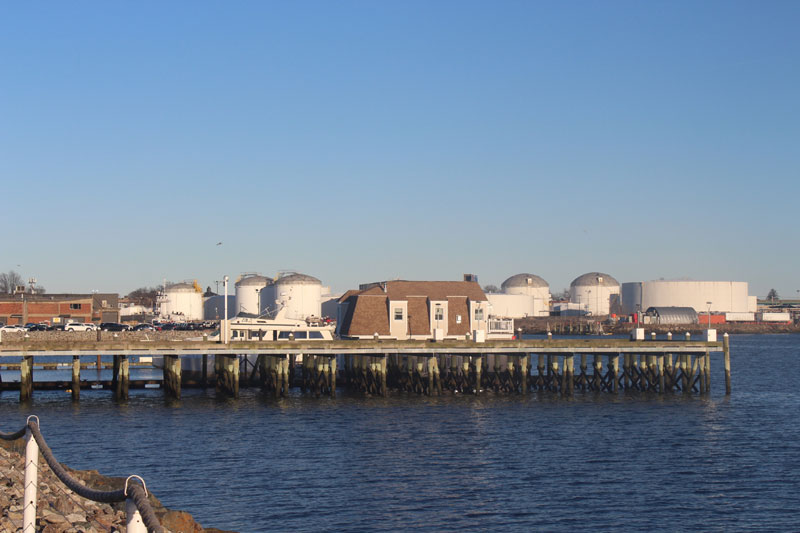
At the GreenRoots headquarters, scenic images of Chelsea’s natural beauty decorate the walls as a tight-knit group of community members buzz around the office.
“What we prioritize here at GreenRoots is relationship building, whether that's with community members, or stakeholders or other partner organizations, we're not in this work alone,” said Bongiovanni.
The organization brings the community together by coordinating frequent environmental literacy discussions, community clean-ups, and cooking classes. They bridge collaborations with local organizations to pursue pushback and litigation against unjust hazards.
GreenRoots involves local youth through their Environmental Chelsea Organizers (ECO) youth crew and Urban Farm Crew (UFC). These teams implement environmental justice campaigns that advocate for their community and prompt involvement from their peers.
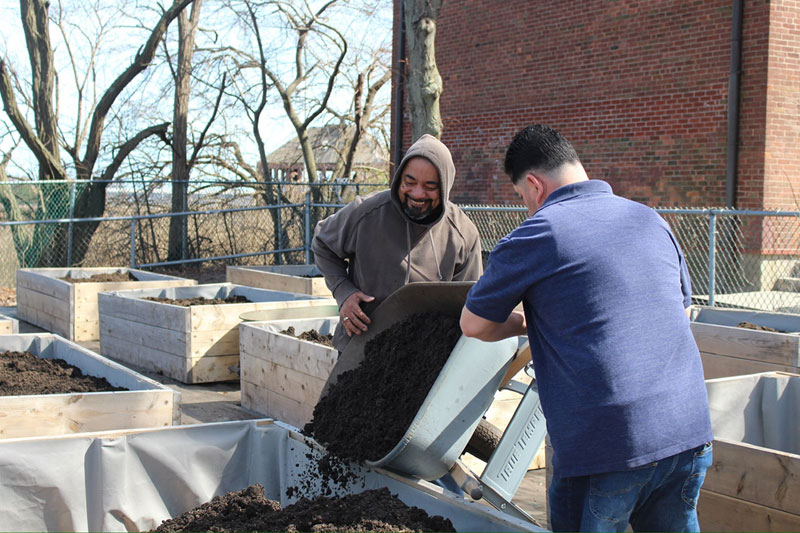
“When I started with GreenRoots, I didn't really have the intent to go study environmental science,” said Arianna Perdomo, a high school senior who has been a member of the GreenRoots’ ECO crew for four years. “[Now,] I intend to pursue environmental science at the University of Maine, study more policy, and hopefully be an environmental lawyer. And I think GreenRoots really helped me with that.”

Chelsea High senior Arianna Perdomo says her work with GreenRoots' ECO crew inspired her to study environmental science in college.
“[ECO] reminded me that I do have a voice. I do have a say in what happens within Chelsea, especially because this is the place where we're living, where we're growing up,” said Emely Deodanes, a high school junior and ECO member for almost one year.
ECO and other GreenRoots organizers collaborated with Boston organizations to protest a proposed siting of a diesel power plant immediately across the street from Chelsea’s elementary school complex. ”We succeeded, but that heightened our awareness of sources of air pollution and high asthma rates,” said Madeleine Scammell, a founding member of GreenRoots’ Board of Directors and a longtime Chelsea resident. Incidence of asthma for Chelsea residents was nearly double that of the state average.
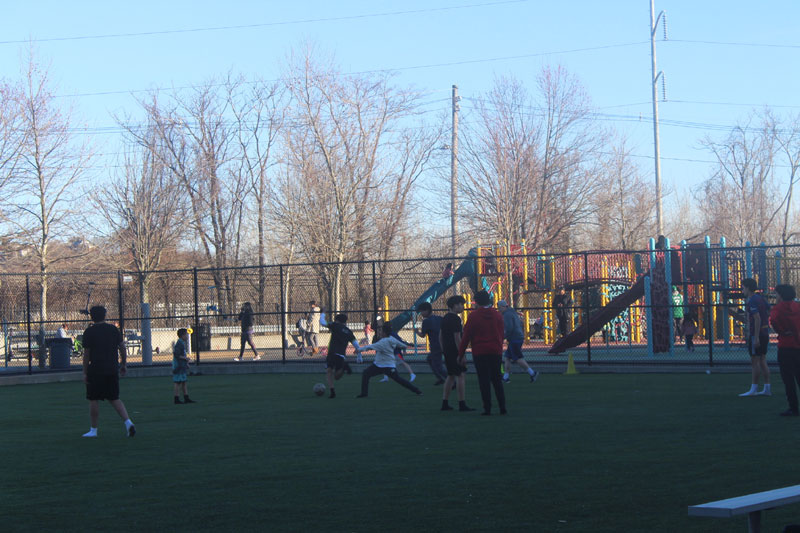
Changing waterfront usage has been one route to combat pollutant exposure. Historic and current land uses along Chelsea’s waterfront are reserved for port area, manufacturing sites, and salt or fuel storage. After years of fighting, GreenRoots successfully challenged a developer’s Chapter 91 license in 2006, winning back access to the river through walkways and public parks.
“Many of the parks in the city have been done, created, and built with GreenRoots’ effort, and some of them with [Roseann Bongiovanni's] specific determination and creative ideas for how they would be designed,” said Scammell.
In addition to parks, GreenRoots has advocated for and oversaw the development of waterfront walkways and created public access to the water’s edge.
At any time, GreenRoots is working on numerous projects to improve water quality, increase access to green space, and prevent further toxic chemical depots in Chelsea, all while hosting community-building events and informational sessions.
While prioritizing environmental justice, Bongiovanni emphasized the importance of backing a variety of projects, “I think food justice is one of our areas that we're really excited about. We manage six community gardens, we just opened up a new teaching kitchen.”
“I feel like I always meet new people when I'm [at GreenRoots’ teaching kitchen],” said Perdomo. “I like it because it just feels like home. I feel like the kitchen aspect really makes it a home to me.”

Jojo Emerson first stumbled upon GreenRoots’ teaching kitchen while on a run around the neighborhood. Given her baking background and desire to get more involved in the community, Emerson recently joined the GreenRoots team as Teaching Kitchen Coordinator.
“Everyone seems to know everybody. You can tell at every event we have, everyone is hugging and greeting each other. Excited to see one another and catch up,” said Emerson. “It is, I think, a really incredible testament to the community building that has been happening in this area for a really long time, in the face of what are some really very difficult structural challenges.”
Tackling so many issues at once is incredibly ambitious but the dedicated members of GreenRoots have shown it can be accomplished. Chelsea is only one town of many that are victim to environmental racism. Organizations, similar to GreenRoots, are working everyday to protect their town and community.
"Chelsea is like the Phoenix that rises out of the ashes …instead of crushing a community, it fosters greater collaboration and community organizing and empowerment,” said Bongiovanni.

